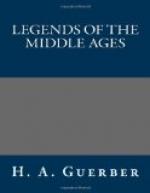This new book gives the preference to forms of spelling now current in the United States, in cases of doubt leaning toward the simpler forms that may be coming into use. In the matter of pronunciation such alternatives are included as are in very common use, but the one that is preferred is clearly indicated. Each definition is in the form of a specific statement accompanied by one or more synonyms, between which careful discrimination is made.
In addition, this dictionary includes an unusual amount of supplementary information of value to students: the etymology, syllabication and capitalization of words; many proper names from folklore, mythology, and the Bible; a list of prefixes and suffixes; all irregularly inflected forms; rules for spelling; 2329 lists of synonyms, in which 3518 words are carefully discriminated; answers to many questions on the use of correct English constantly asked by pupils; a guide to pronunciation; abbreviations used in writing and printing; a list of 1200 foreign words and phrases; a dictionary of 5400 proper names of persons and places, etc.
AMERICAN BOOK COMPANY
PUPIL’S NOTEBOOKS AND STUDY OUTLINES IN HISTORY
ORIENTAL AND GREEK HISTORY
By L.B. LEWIS, Teacher of Ancient History, Central High School, Syracuse, N.Y.
ROMAN HISTORY
By EDNA M. McKINLEY, Ph.B., Teacher of Ancient and European History, Central High School, Syracuse, N.Y.
These notebooks combine the topical and library methods of studying history. They give a correct historical perspective; they show the relation of important events to each other; and they drive home in the pupil’s mind certain vital facts by requiring him to perform various kinds of interesting work, which in each case is definitely laid out.
A skeleton outline of topics is included with indications of subdivisions and blank spaces in which the student is to write the more important sub-topics and other brief notes to complete the outline.
Special topics for collateral reading are inserted to supplement the text in the proper places. These special topics are to be reported on in class in connection with the regular text lesson, and the reports are to be written by the student on the blank pages left for this purpose at the end of the book. A very full list of books, with pages specified, is given in connection with each topic.
The large number of these special topics affords ample choice, and emphasis has been placed on those which show the life and character of the people. These topics may be used as themes in English, and as subjects for debate, in order to stimulate reading and discussion on the part of the class.
There are outline maps to be filled in, and numerous spaces for drawings and plans which can easily be made by the pupil after consulting the specific references in the books mentioned.




